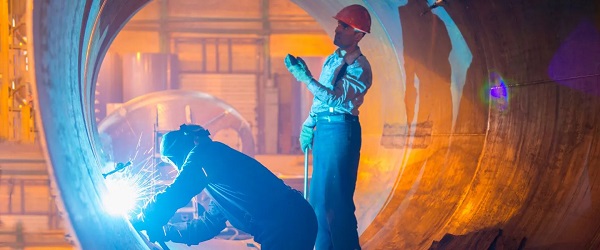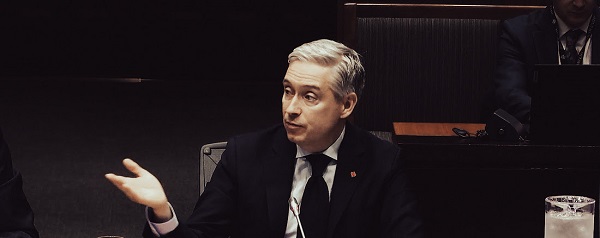Energy
In the halls of Parliament, Ellis Ross may be the most high-profile advocate of Indigenous-led development in Canada.
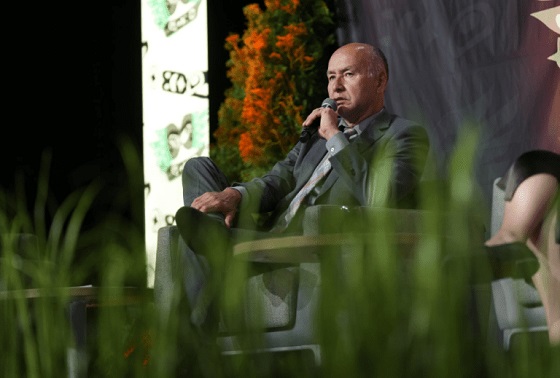
From Resource Works
“We’re not talking about reconciliation anymore…we’re talking about prosperity, and making sure it lasts.”
Ellis Ross stepped onto the stage at the Vancouver Convention Centre last year. He didn’t reach for notes, and spoke plainly to the audience of business leaders, chiefs, and policymakers gathered for the Indigenous Partnerships Success Showcase (IPSS).
“I’m very proud to say that my band, the Haisla Band, is no longer talking about unemployment, poverty, reconciliation,” Ross said. “We’re talking about the management of wealth.”
Ross’s message was equal parts challenge and triumph, and was followed by a standing ovation for a man who has lived the slow climb from the margins to the mainstream. Once a water-taxi operator in Kitamaat Village, he is now one of the country’s most influential Indigenous political figures.
As he returns as a featured guest to this year’s IPSS, Ross embodies the event’s core theme: Shared Prosperity Now.
Born and raised in the Haisla Nation near Kitimat, Ross spent his early life in a community scarred by unemployment and a lack of opportunity.
“We had nothing,” Ross told the Arc Energy Ideas podcast last year. “We were begging for money, begging for infrastructure. We were one of the poorest bands in British Columbia.” Under his leadership, that changed forever.

As Haisla chief councillor from 2011 to 2017, Ross helped transform his community through industry partnerships rooted in resource development. He rejecting the old idea that development was a natural enemy of culture, and steered the Haisla into the energy economy on their own terms by embracing liquefied natural gas (LNG).
The Cedar LNG project, co-owned by the Haisla Nation and Pembina Pipeline, will become the largest Indigenous-majority-owned energy project in Canada’s history.
“It will have one of the lowest carbon footprints in the world,” said Crystal Smith, Ross’ successor as Haisla Chief Councillor. Cedar LNG is scheduled to begin operation in 2028.
For Ross, participation means power.
“If you uplift an Aboriginal community, the biggest beneficiaries, apart from First Nations, are the rest of British Columbia,” he said at IPSS in 2023. “We’ve got no malls or car dealerships on reserves. We spend it in our neighbouring communities.”
Ross’s journey hasn’t been without conflict. Writing in the Times Colonist in 2020, he warned of foreign-funded activists “hijacking our future” by dividing Indigenous communities and undermining resource partnerships.
“The last thing any of us need is intervention from foreign groups that want to hijack our future for their own objectives,” he wrote, condemning the influence of U.S. foundations funnelling money to anti-development campaigns.
He is vehemently opposed to “distraction politics”, and it became a hallmark of Ross’s political career. As MLA for Skeena from 2017 to 2024, Ross built a reputation for straight talk. He was eager to defend both workers and environmental standards for the modern resource industry.

With a pragmatic style, he gained admiration from both business leaders and former premier Christy Clark, who has praised Ross because he “fought for an LNG industry that will be the cleanest, the greenest, and the safest anywhere in the world.”
By early 2024, Ross announced his move to federal politics, saying he wanted to take “the principles I’ve developed over the last 15 years” to Ottawa.
Now the Member of Parliament for Skeena-Bulkley Valley, he’s now one of the most prominent Indigenous voices in the House of Commons, and one of the few with deep experience in both community governance and heavy industry.
Recently, Ross said he plans to hold the federal government to its promise of making Canada an “energy superpower.”
“For the area and for Canada, I want to hold this government accountable for those words,” he told the Prince George Citizen. “Projects like LNG Canada and Cedar LNG can show the world how Indigenous leadership and environmental responsibility go hand in hand.”
Ross’s attendance at IPSS 2025 comes at a moment when Indigenous participation in major projects is reshaping the national economy.
More than two dozen First Nations now hold equity in energy, mining, or infrastructure developments. It is proof that reconciliation, in his view, must be measured not in lofty statements but in actual ownership.
“You’ve got to leave a lot of those old narratives at the door,” he told delegates. “We’re not victims. We’re builders.”
Now, from the carpet of Parliament Hill to the polished floors of the Vancouver Convention Centre, Ellis Ross continues to speak for both the Haisla and the wider coalition of Indigenous and non-Indigenous Canadians who believe in growth through partnership.
As IPSS Event Lead Margareta Dovgal put it, “He bridges worlds—the boardroom, the band office, and the floor of the legislature.”
When Ross steps back onto the IPSS stage this November, expect the same mix of candour and conviction that has defined his career. “
We’re not talking about reconciliation anymore…we’re talking about prosperity, and making sure it lasts.”
Energy
“It is intellectually dishonest not to acknowledge the … erosion of trust among global customers in Canada’s ability to deliver another oil pipeline.”
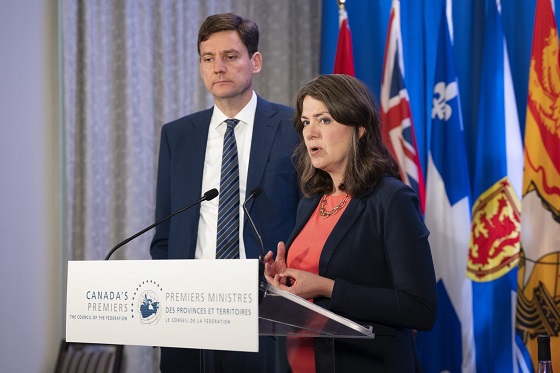
From Resource Works
Life in a federation is mostly hard, but worth the effort and frustration. We should keep that in mind when we face a question like: Should there be a second oil pipeline to Canada’s Pacific Coast?
We should also remind ourselves of the chain of events that led eligible voters in the Colony of British Columbia to choose Canada over the United States, and what the British North America Act stated about such decisions at that time and still today.
Section 92 of the Constitution stipulates that infrastructure projects that connect or run through provinces fall within federal jurisdiction. It clearly states that Parliament may declare a project which is wholly situated within one province to be “…for the general Advantage of Canada or for the Advantage of Two or more of the Provinces.”
Many crucial events took place between 1867 and 1871, the year B.C. entered Confederation. Canada and the United States were in a race across North America to the Pacific.
The United States had reached Washington State and Alaska by 1867, which posed a threat to Canada. In 1870, Canada acquired from the Hudson’s Bay Company the land that is today Manitoba, Saskatchewan, Alberta, Yukon, the Northwest Territories, and Nunavut. Both the United States and Canada competed for BC.
The Colony of British Columbia was having infrastructure debt problems, as Britain was becoming a less enthusiastic sponsor. Canada won the competition in part because of Upper Canada’s British roots, but the deal was sealed by promising to build a transcontinental railway.
B.C.’s entry to Confederation had everything to do with a transportation corridor. Ever since, Canada has relied upon B.C. to be an ever-expanding transportation and energy corridor, and the province has delivered. Today, B.C. hosts the largest and third-largest deep-sea ports in the country, as well as the only oil and natural gas pipelines to tidewater.

I agree with Premier Eby that BC’s contribution has been taken for granted, as have other western provinces. However, I disagree with the dismissive arguments he is making about Alberta’s goal to significantly increase oil production, in particular, relying on the point that there is no proponent.
Premier Smith, Federal Minister Hodgson, and potential proponents are all clearly acknowledging that fact. They also demonstrate a clear understanding of the requirements for adding the proposed project to the Major Projects List. The purpose of Alberta’s undertaking is an attempt to reach that threshold.
It is intellectually dishonest not to acknowledge the shattering of investor confidence and the erosion of trust among global customers in Canada’s ability to deliver another oil pipeline.
Both Premier Smith and Minister Dix appeared on CTV’s Power Play this past week. I cheered them both on and thought each did a good job. It was entertaining, but not political theatre. The debate was an expression of opposing viewpoints within a pluralistic and democratic country.

The argument that TMX is not at capacity is true but irrelevant. If the dredging is completed on schedule, the terminal will be capable of reaching full capacity as early as Christmas 2026, bringing total rail and pipeline capacity to approximately 4.8 million barrels per day. Production in Western Canada in July 2025 was 4,303,045 barrels per day.
Saskatchewan has set a 2030 target of 600,000 barrels per day, and projections indicate that Alberta’s 2034 production goals will reach 4.7 million barrels per day. This raises the need for an increased transport capacity to approximately 5.3 million barrels.
It is a fair point made by Premier Eby and Minister Dix that 10 years ago, a social licence trade-off was made with coastal First Nations in exchange for accepting LNG on the North Coast. Many things have changed since then that warrant a thoughtful second look.
There has been a general stagnation in living standards for something like eighty percent of the population. Public debt is rising to a level that is threatening many public services. The breakdown in relations with the United States is attacking our economy and sovereignty.
We have come to realize that we need billions of dollars annually to fortify the Arctic regions, protecting our northern populations and their resources from Russia and China.
Also, it has become apparent in the changing geopolitical landscape that energy resources and energy technology are essential currency for a mid-sized country to establish reliable trading partners and allies. It will get us back to the table internationally with credibility.
It is now clear that the industrialization of developing and emerging economies will not be halted. Canada has a choice to be an active, positive democratic participant or sit on the sidelines.
We now acknowledge that our proximity and dependence on the United States have defined our place in the world. We will need every asset and every comparative advantage to make that change. If we become less reliant on the United States, they will be less inclined to take us for granted.
The first proposal had the pipeline terminal at Kitimat. The project being worked on today proposes that it be changed to Prince Rupert. Many reports suggest that a route from Prince Rupert, and through Dixon Entrance, is the safest, even safer than the Burrard Inlet. This contention should be tested early in the process.

Most importantly, what has changed is that a growing number of First Nations are leading resource development. Joint regulatory processes, business, employment, and training opportunities, as well as access to rents and equity, have brought Indigenous Nations into partnerships with governments and corporations. The first equity opportunity came through the oil and gas industry.
It is reasonable to assume that the tanker ban decision made 10 years ago should be put under scrutiny. It is also sensible that potential proponents and supportive First Nations and Indigenous economic development groups engage with other First Nations in the early stages of developing an amended version of the Northern Gateway Pipeline.
It is also necessary to answer this question: What is the probability that Canada can successfully meet the consensus economic and sovereignty goals we have set for ourselves without expanding oil production?
Like it or not, oil outweighs natural gas and critical minerals in value when its entire value stream is considered.
One final thought. The NDP of old would not have objected to public ownership of an oil industry company. We should learn from the Norwegian example. Norway sold its leading oil and gas company in 2001 on the Oslo and New York Stock Exchanges. They did so because their reserves are limited, and they decided to acquire international assets, including in Canada.
Since then, Equinor has significantly expanded its asset base, and private companies now own approximately one-third of the company’s shares. Despite top-level environmental regulations, and the fact that the people of Norway hold two-thirds of the shares, private investors have confidence.
Jim Rushton is a 46-year veteran of BC’s resource and transportation sectors, with experience in union representation, economic development, and terminal management.
Daily Caller
Now Is A Great Time To Be Out Of America’s Offshore Wind Business
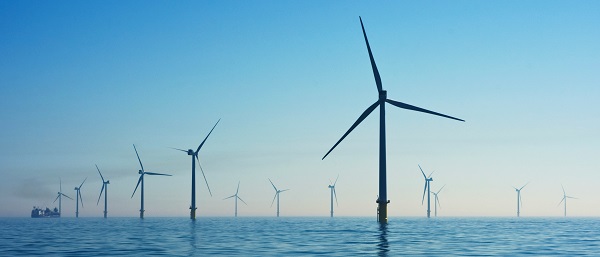

From the Daily Caller News Foundation
Is the push and pull in the energy and climate regulatory environment hurting the ability for companies to finance and complete energy projects in the United States? The head of Shell in the United States, Colette Hirstius, said she believes it is in a recent interview.
“I think uncertainty in the regulatory environment is very damaging,” Hirstius said, adding, “However far the pendulum swings one way, it’s likely that it’s going to swing just as far the other way.”
Hirstius was addressing the moves made by the Trump administration to slow the progress of the offshore wind industry, which was the crown jewel of the Biden administration’s headlong rush into a government-subsidized energy transition. Trump’s regulators, led by Secretary of Interior Doug Burgum and Energy Secretary Chris Wright, have taken a series of actions in compliance with executive orders signed by Trump since January to halt several projects that were under construction, roll back federal subsidies, and review permits they believe were hastily issued in non-compliance with legally required processes.
Dear Readers:
As a nonprofit, we are dependent on the generosity of our readers.
Please consider making a small donation of any amount here.
Thank you!
That hope seems discordant, coming as it does amid Shell’s ongoing effort to step back from offshore wind and refocus more of its capital budget back to its core oil and gas business following years of unprofitable ventures into renewables. It also seems fair to point out that the political pendulum about which Hirstius warns already swung wildly in favor of offshore wind and other wind and solar projects in the Biden administration. It is odd that Shell only now decides to roll out that particular warning.
Shell was pulling back from its major offshore wind investments while Trump was still fighting off efforts by an array of Democratic prosecutors to put him in prison. In June 2023, for example, the company announced its intent to offload its 50% share in the Southcoast project offshore Connecticut amid Biden era high inflation and supply chain challenges that were already rocking the industry at the time. Nine months later, Shell sold the interest to another party.
The company announced last December that it was “stepping back from new offshore wind investments” as part of a company-wide review implemented by then-new CEO Wael Sawan in mid-2023. A month later, it cancelled its interest in the Atlantic Shores project, writing off $1 billion in investments in the process. Shell’s ventures into the U.S. offshore wind arena had run head-long into economic reality long before the second Trump presidency came along.
That Atlantic Shores project has become an item of special interest inside the Interior Department’s Bureau of Ocean Energy Management (BOEM) in recent days. In a court filing last Friday, BOEM Deputy Director Matthew Giacona said the Bureau plans to conduct a full review of the process that went into approving Atlantic Shores during the Biden presidency. He also said the review would likely expand to other offshore wind projects given the administration’s concerns that Biden’s regulators failed to properly assess the true environmental impacts these major industrial installations create.
In addition to that, the Daily Caller’s Audrey Streb reported on Monday that Biden regulators gave the go-ahead to some of these offshore projects despite internal concerns expressed as early as 2021 that granting long delays in their decommissioning processes “increases risk to the federal taxpayer.” Offshore developers are normally required to provide financial assurance to pre-fund such costs, but big Danish developer Orsted and others were requesting delays as long as 15 years in that requirement to make their project economics work.
Hirstius’s concerns about regulation are absolutely valid: Having such certainty is a crucial element for any company to be able to plan its future business endeavors. But every presidency has a duty to ensure that actions by prior administrations meet the mandates of prevailing laws. It has long been feared that the Biden regulators cut important corners related to environmental and marine mammal protections to speed some offshore wind projects through the process.
As this current review process plays itself out, Shell might well find itself glad it cut its losses in this failing offshore wind sector when it did.
David Blackmon is an energy writer and consultant based in Texas. He spent 40 years in the oil and gas business, where he specialized in public policy and communications.
-

 Business21 hours ago
Business21 hours agoCall for Federal Inquiry as Pressure Mounts for Release of Buried Report on Buddhist Land Transactions in PEI
-

 COVID-192 days ago
COVID-192 days agoConservative MP slams Freedom Convoy leaders’ sentencing as ‘political persecution’
-

 Automotive20 hours ago
Automotive20 hours agoGovernments continue to support irrational ‘electric vehicle’ policies
-

 Internet20 hours ago
Internet20 hours agoSocial media pushes pornography on children within minutes, report finds
-

 Business2 days ago
Business2 days agoGovernment distorts financial picture with definition of capital
-

 Daily Caller1 day ago
Daily Caller1 day agoTrump Shares When Both Dead And Alive Hamas Hostages Are Expected To Be Released
-

 COVID-191 day ago
COVID-191 day agoCanadian commentators call Freedom Convoy leaders’ sentences ‘onerous,’ ‘too stiff’
-

 Business2 days ago
Business2 days agoCanada Post is failing Canadians—time to privatize it
